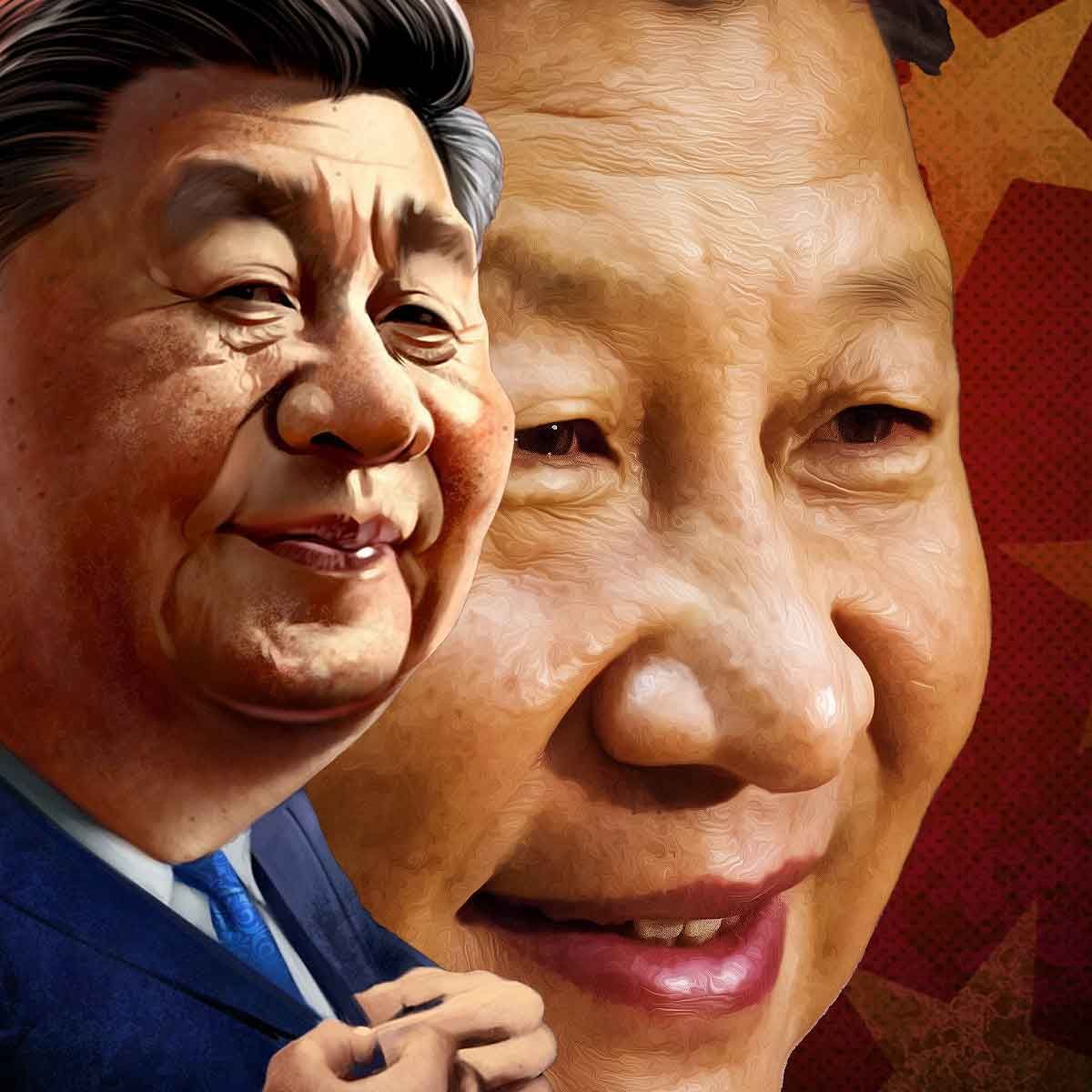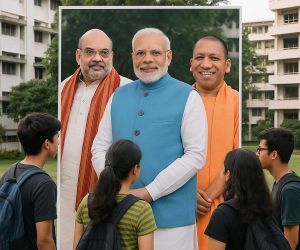MORE COVERAGE
Twitter Coverage
Satyaagrah
Written on
Satyaagrah
Written on
Satyaagrah
Written on
Satyaagrah
Written on
Satyaagrah
Written on
JOIN SATYAAGRAH SOCIAL MEDIA
As China audaciously unveils a fictitious map ahead of G20 Summit, claiming Indian territories, their blatant expansionist designs are exposed, this is not just a geographical misstep, but a gross violation of international decorum and India's sovereignty

In the world of geopolitics, maps are not just mere tools for navigation; they are often powerful symbols that communicate intentions and assertiveness. Just days before the much-anticipated G20 summit, China has stirred the proverbial pot by unveiling an audacious version of its territorial map. In this edition, the country has, quite brazenly, laid claim to the entirety of Arunachal Pradesh and sections of Ladakh, both indisputable parts of Indian territory.
It's worth a jog down memory lane to recall that in December 2021, India's Ministry of External Affairs (MEA) had unequivocally expressed its discontent over China's audacity in naming 15 locations in Arunachal Pradesh. The MEA had made its stance crystal clear, asserting, "Arunachal Pradesh has always been and will always be an integral part of India. Assigning invented names to places in Arunachal Pradesh does not alter this fact."
|
 |
Now, fast forward to 28th August, the Chinese cartographers, working in tandem with the government's vision, showcased their 2023 edition of its territorial map. This "imagined" map not only includes Arunachal Pradesh and sections of Ladakh, particularly the Aksai Chin region, but it also brazenly encloses Taiwan and the highly contested 9-dash line in the South China Sea.
However, the timing of this release is what makes it even more intriguing. With India poised to play host to the G20 Summit on the 9th and 10th of September, the unveiling of this map seems to be more than just a simple cartographic update. The G20, comprising the world's largest economies, is an influential platform where the leaders of these nations discuss international financial stability. China, as a member, will be participating, and its President, Xi Jinping, is scheduled to set foot in Delhi.
Given the significance of the G20 summit and its pivotal role in shaping global policies, China's recent move can be seen as a direct challenge to India's sovereign rights and a strategic maneuver to perhaps unsettle the host nation ahead of this crucial meeting.
In the grand game of geopolitics, nations often make bold moves, and this map might just be China's way of making its voice heard on the global stage. However, the international community will undoubtedly be watching closely, awaiting India's response and the potential ripple effects this may cause in international relations.
|
|
The map, as described by The Global Times, China's official media conduit, showcases what many critics are labeling as an audacious overreach. Released on 28th August, it's touted as the latest "standard map" of the nation.
The map's publication seems to be a strategic move, given the timing. Hosted by India, this year's G20 Summit is just around the corner. One must wonder if this was China's way of laying its cards on the table before Chinese President Xi Jinping sets foot in Delhi.
According to The Global Times' recent revelations, the cartographic rendition, borne from China's Ministry of Natural Resources, was compiled using national borders of countries worldwide. Strikingly, regions that have for centuries been integral parts of India, like Arunachal Pradesh and Aksai Chin, are now painted with the broad strokes of China's territorial claims. India, steadfast and unwavering, has retorted with a stance that has been iterated time and time again: “Arunachal Pradesh was, is and will always remain an integral and inalienable part of India.”
|
Yet, India is not the only nation finding its territorial integrity challenged. A closer look reveals Taiwan's unceremonious annexation into the Chinese mainland. Furthermore, China's nine-dash line boldly claims vast expanses of the South China Sea—a move that's sure to ruffle the feathers of nations like Vietnam, the Philippines, Malaysia, Brunei, and of course, Taiwan, all of whom have laid claims to parts of these very waters.
President Xi Jinping's ambition seems palpable, especially as the map clearly dovetails with his strategic objectives. But with the G20 Summit just days away and leaders from around the globe watching, the world now waits to see how this geopolitical chess match unfolds.
China's territorial ambitions and its ongoing claims over Indian territories have been a simmering point of contention for years. As historical evidence attests, this is not the first time China has staked its claims on areas integral to India's sovereignty, notably Arunachal Pradesh and Aksai Chin. The audacious step taken by China in December 2021, renaming 15 sites in Arunachal Pradesh, drew sharp criticisms from India's Ministry of External Affairs (MEA). Reminding the world of prior instances, the MEA remarked, “We have seen such reports. This is not the first time China has attempted such a renaming of places in the state of Arunachal Pradesh." Recalling the attempt by China in 2017 to similarly rename places, the MEA remained unequivocal in its stance: "Arunachal Pradesh has always been and will always be an integral part of India. Assigning invented names to places in Arunachal Pradesh does not alter this fact.”
China's endeavors to reshape geographical realities extend beyond mere renaming. In April 2021, OpIndia highlighted the actions of a Chinese citizen who manipulated open-source maps of the Line of Actual Control in favor of China. Going even further back to March 2019, reports poured in about China's audacious move of destroying over 30,000 world maps that identified Arunachal Pradesh as an Indian territory.
Amidst these territorial tussles, the recent meeting between Chinese President Xi Jinping and Prime Minister Modi at the BRICS Summit in Johannesburg had raised hopes. Jinping emphasized the need for comprehensive dialogue between the two nations to ease border frictions. But juxtapose this with the newly released Chinese map claiming Indian territories, and one can't help but question China's genuine commitment to alleviating border tensions.
As leaders gear up for the G20 Summit, the world watches with bated breath. The unfolding dynamics between these two Asian giants will undoubtedly shape the geopolitics of the region. However, amidst the diplomatic dances and strategic posturing, one thing remains clear: China's cartographic aggression reveals a deeper geopolitical game at play.
 Support Us
Support Us
Satyagraha was born from the heart of our land, with an undying aim to unveil the true essence of Bharat. It seeks to illuminate the hidden tales of our valiant freedom fighters and the rich chronicles that haven't yet sung their complete melody in the mainstream.
While platforms like NDTV and 'The Wire' effortlessly garner funds under the banner of safeguarding democracy, we at Satyagraha walk a different path. Our strength and resonance come from you. In this journey to weave a stronger Bharat, every little contribution amplifies our voice. Let's come together, contribute as you can, and champion the true spirit of our nation.
 |  |  |
| ICICI Bank of Satyaagrah | Razorpay Bank of Satyaagrah | PayPal Bank of Satyaagrah - For International Payments |
If all above doesn't work, then try the LINK below:
Please share the article on other platforms
DISCLAIMER: The author is solely responsible for the views expressed in this article. The author carries the responsibility for citing and/or licensing of images utilized within the text. The website also frequently uses non-commercial images for representational purposes only in line with the article. We are not responsible for the authenticity of such images. If some images have a copyright issue, we request the person/entity to contact us at This email address is being protected from spambots. You need JavaScript enabled to view it. and we will take the necessary actions to resolve the issue.
Related Articles
- Explained: China’s Village Construction In Bhutan’s Territory And What It Wants To Achieve With This Creeping Invasion
- "I'm a maximalist, so I'm probably not very elegant. My art is not a coup de grace. Its a war of attrition": The truth behind the ‘coup’ against China’s Xi Jinping - his ouster and house arrest were all but speculation started by social media commentators
- "You can distill deterrence down to two factors: capability and will": Tawang Clash ~ India scrambled IAF jets multiple times in recent few weeks to deter China LAC incursions, Chinese drones had moved aggressively towards Indian positions on LAC
- "Live in thy shame, but die not to shame with thee!": China claims that Biden’s White House is lying, Joe never brought up Genocide and Forced Labor with Xi Jinping - Now, who are you gonna trust? The Chinese Communist Party, or Lyin’ Joe Biden?
- "When the ink reveals more than the words": Over 255 prominent Indian citizens wrote to President of India and CJI urging for a thorough inquiry into NewsClick's suspicious funding from Neville Roy Singham, a figure connected to Chinese media machinery
- Negative sentiments about China and Xi Jinping at a record high among most advanced countries: Pew Research study
- "It was horrible.. cheating shouldn't be appreciated": False start, threat of disqualification, trauma, protests and a medal upgrade, this is what all hurdles Jyothi Yarraji had to cross before claiming silver in 100m hurdles after false start by Yanni Wu
- "Breathing life back into the edges of our nation": PM Modi redefines 'last villages' as India's 'first', emphasizing their role in national development, the VVP promises infrastructure growth, cultural preservation, & curbing migration in border regions
- India now demands full hardware, software, and source code checks on all CCTV cameras post-April 9, shaking Chinese giants like Hikvision and Xiaomi, as Delhi leads with 2.5 lakh cameras and the $7B market braces for strict cybersecurity enforcement
- Group of Wuhan scientists have sounded alarm bells of a new variant ‘NeoCoV’ which is highly infectious and virulent, leading to the death of 1 in 3 patients if infected
- Dr Fauci, Peter Daszak and more: The damning involvement of American scientists and bureaucrats in suppressing truth about Covid origins
- "Strategy requires thought, tactics require observation": Tanzania now becomes part of India’s strategic outreach focusing on Africa’s east coast, also it has become the 2nd-largest recipient of credit from India as New Delhi races Beijing to woo Africa
- How Nehru's Govt helped China in conquering Tibet and let go of it's centuries old friend
- Nepal marched from Mahendra Chowk to Bhatta Chowk protesting against excessive Chinese interference in country’s internal affairs: Burnt pictures of Chinese President Xi Jinping and raised slogans of ‘Go Back China'
- Western sanctions on Russia, with 19,535 measures imposed since 2022, aimed to cripple its economy but instead drove alliances with China, India, Iran, and North Korea, boosting trade, diversifying its economy, and weakening Western dominance

























